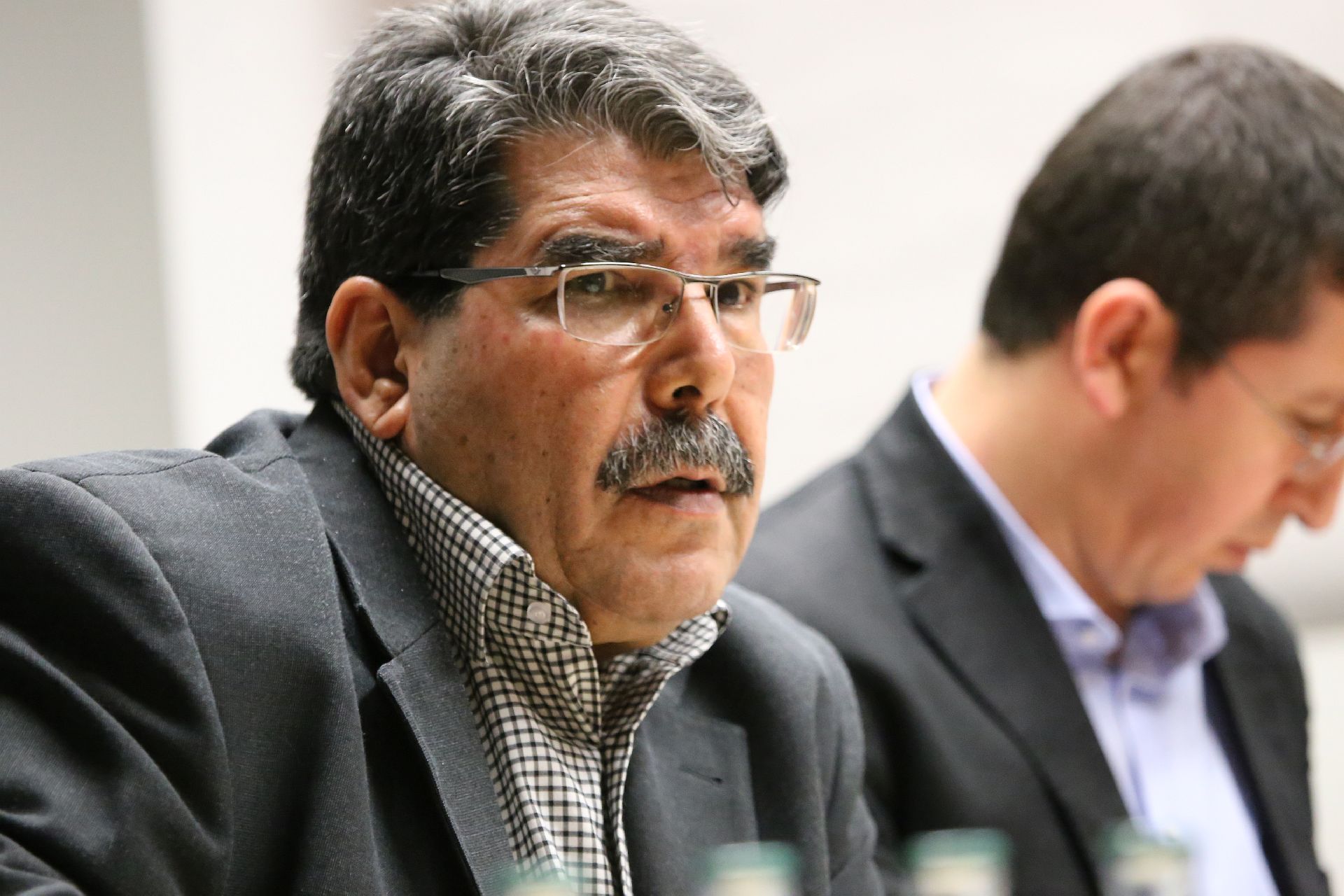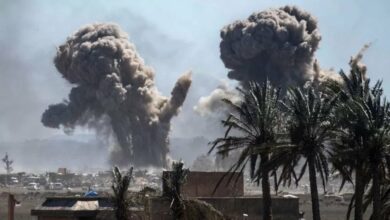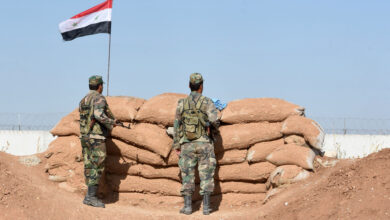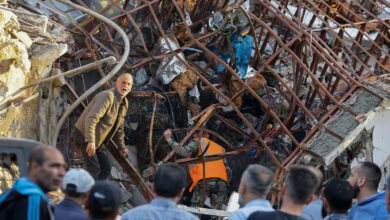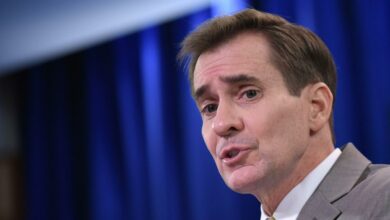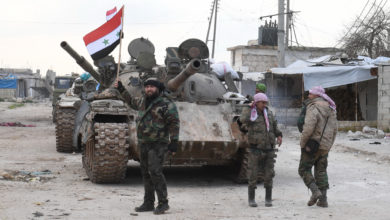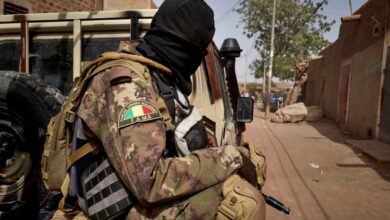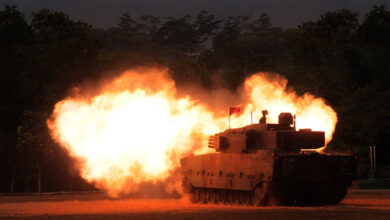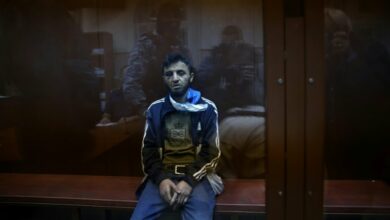Alliance between SDF and Syrian regime is “very far away,” senior Kurdish official Salih Muslim says
Muslim was responding to Coalition commander Lt. Gen. Paul LaCamera, who said the US would be obliged to sever its military support for the SDF if it partners with the Syrian regime
Senior Syrian Kurdish politician Salih Muslim said that any military partnership between the Syrian Democratic Forces and Bashar al-Assad’s government is “very far away” and will depend upon a negotiated political solution to the Syrian conflict.
“Any alliance with the regime couldn’t be just allied or coordinated between them without the political solution for all of Syria,” Muslim, a senior official and past co-president of the Democratic Union Party of Syria (PYD), told The Defense Post on Monday, February 18.
“So maybe at that time, the Syrian Democratic Forces could be a part of the defense system of all Syria … This kind of alliance is very far away. It can only be [formed] after the overall political solution for [the] Syria[n] conflict, which means stability for Syria.”
“For these conditions, these days, such [an] alliance with the regime forces is not possible, of course,” Muslim said.
The PYD is the political arm of the mainly-Kurdish People’s Protection Units (YPG) militia that forms the backbone of the primary Coalition partner force in the fight against Islamic State in Syria.
Muslim was speaking in response to Coalition commander Lieutenant General Paul LaCamera’s comments on Sunday that the U.S. government would be legally obliged to sever its military support for the SDF if it partners with the Syrian regime.
“We will continue to train and arm them as long as they remain our partners,” said LaCamera, the commander of CJTF-OIR.
“Once that relationship is severed, because they go back to the regime, which we don’t have a relationship with, [or] the Russians … when that happens then we will no longer be partners with them,” Reuters quoted LaCamera as saying.
“The Kurdish choice, the decision of the SDF and SDC, is directly connected to the decision of the American forces,” a source close to SDF leadership told The Defense Post.
“The question of whether the American and Coalition forces will remain in this area to protect against any Turkish aggression or invasion, or to prevent Iran, Russia, or the regime from influencing the area, this is a question that requires a clear-cut strategy and plan,” said the source, speaking on condition of anonymity.
“If the United States has been discussing that matter, of course the Arabs and the Kurds wouldn’t need to discuss security.”
“The pivotal question is, do the U.S. and the international Coalition have a clear plan to deal with the developments in Syria? Will these forces stay? Will there be safe zones? This is what will determine the nature of the relations with the dictatorial regime in Damascus.”
U.S. Central Command commander General Joseph Votel said on Saturday that he believes the Pentagon should continue arming the SDF after the American withdrawal, as long as they continue the fight against Islamic State.
The Coalition-backed SDF has captured all but a few hundred square meters of ISIS territory near the Iraq border.
With that victory at hand, the SDF Military Council signalled its transition from seizing territory to hunting down ISIS sleeper cells “with the support of the Global Coalition Forces” in a statement issued after a meeting in Hasakah on Sunday.
The SDF also signalled a shift towards fighting for control of Turkish-occupied Efrin, according to the statement, a move could also jeopardize U.S. relations with the group.
Turkey has been threatening for months to “clear” parts of northern Syria of YPG and PYD, which it considers inextricable from the Kurdistan Workers’ Party (PKK), which has fought a decades-long insurgency in Turkey.
U.S. President Donald Trump’s abrupt mid-December decision to withdraw U.S. forces from Syria left SDC leaders without guarantees of protection in the face of Turkey’s threats.
The the SDF’s political arm, the Syrian Democratic Council, has submitted a “roadmap” to the Syrian government via Moscow which proposes a deployment of Syrian troops along the Turkish border.
The proposal includes a list of conditions focusing on preserving semi-autonomy, and rights for minorities, including Syria’s Kurds.
Muslim did not comment on a possible return of Syrian Arab Army to the country’s northeast.
Speaking at the Munich Security Conference on Sunday, Russia’s Deputy Foreign Minister Sergey Vershinin said that his government supports the initiation of direct dialogue between the SDC and Damascus as U.S. forces leave Syria.
The Russian government has proposed Turkey and Syria reactivate the 1998 Adana agreement, which obliges Damascus to crack down on the PKK and affiliated organizations within Syrian territory and allows Turkey to conduct cross-border operations against the groups.
Last month, the Assad regime signalled its readiness to fulfill its obligations under the agreement if Turkey withdraws its forces and support for anti-government rebels in Syria’s north.
James Jeffrey, the senior U.S. envoy to the Coalition, said in Munich on Sunday that the U.S. was opposed to Assad’s forces regaining control of territory in northern Syria currently held by the SDF.
“Our goals in the northeast have not changed. They involve first of all maintaining security in the region, which means we are not at all in favour of the regime coming back in because the regime doesn’t promote stability as we see in other areas,” said Jeffrey, who was appointed Special Presidential Envoy to the Global Coalition to Defeat ISIS in January.
“Then we also want to take care of security concerns of our Turkish NATO allies. And we are very concerned that the SDF is not mistreated in any new shifting there.”
U.S. officials have affirmed Trump’s decision to leave is final, but say that the process will be measured.
American officials are currently seeking alternative forces to man a buffer-zone along the Turkey-Syria border in hopes of alleviating Turkish security concerns and protecting the SDF.
U.S. officials have explored a possible deployment of forces tied to Syrian opposition leader Ahmed Jarba to create the buffer zone, but questions remain over whether those forces are sufficient.
Officials are currently requesting European allies “commit hundreds of troops” to secure the border, the Washington Post reported on Saturday.
Jeffrey emphasized on Sunday that the SDF has been informed that the U.S. pullout will be planned and deliberate.
“We’ve been telling them continuously this is not going to be an abrupt, rapid withdrawal but a step-by-step withdrawal,” he said.
“We are consulting very carefully and very closely with them. If they felt that they weren’t consulted enough initially, we are doing our very, very best night and day, believe me, to ensure that they don’t feel under-consulted right now.”
Mazlum publicly requested continued air cover and for some 1,500 troops to remain in Syria after the U.S. withdrawal following a meeting with Votel in Syria on Monday, saying his side feared “genocide” from Turkey, Reuters reported.
“We certainly understand what they would like us to do, but of course that’s not the path we’re on at this particular point,” Votel was quoted as saying.
SDF and SDC officials told The Defense Post in December that American military officials personally apologized to them for Trump’s decision to withdraw.
US gives Kurds conflicting messages
Syrian Democratic officials told The Defense Post in late December that they were left in the dark about Washington’s intentions for weeks after Trump’s surprise decision to withdraw U.S. forces from Syria.
Trump’s decision also left U.S. diplomats and military officials without a plan for executing the withdrawal while maintaining protection for the SDF.
Seeking advice on the day of the withdrawal announcement, LaCamera was instructed by a senior State Department official to inform Mazlum that the U.S. planned to support his forces diplomatically.
Following Trump’s decision, Mazlum told U.S. officials that he was “looking at his options,” the State Department official said.
LaCamera also discussed the possibility of the U.S. providing a no-fly zone to protect the SDF, but was not given any indication that Washington intended to do so at the time.
For years, the U.S. military’s position on territory captured by the SDF and Coalition from ISIS has been that it would eventually be returned to Syrian government control, Nicholas Heras, a Middle East security fellow at the Center for New American Security, told The Defense Post.
But no plan was in place when Trump decided to withdraw U.S. forces.
“They don’t believe that Bashar al-Assad is capable of stabilizing all of Syria,” Heras said. “They believe that ISIS will come back if the territory is given back to Assad.”
“Ergo, there was this handover dilemma from the U.S. military side about when and how do you actually give that territory back to Damascus,” Heras explained.
Assad warned the Kurds in a speech before parliament on Sunday that the U.S. would use them as a “bargaining chip” and would not protect them from attack by Turkey.
Assad rejected what he attempts at “comprehensive decentralization” of the Syrian state.
“No one will protect you except your state. No one will defend you except the Syrian Arab Army,” he said.
Editor’s note, February 20, 2019: An earlier version of this story described General Joseph Votel as the U.S. Chairman of the Joint Chiefs of Staff. The Defense Post regrets the error.

